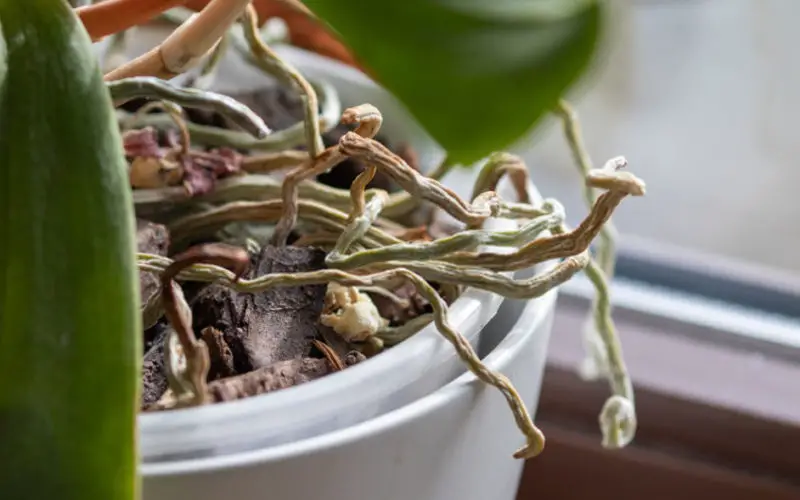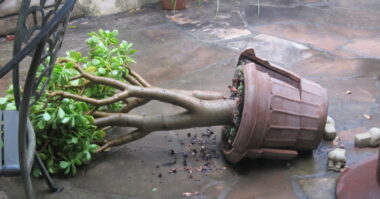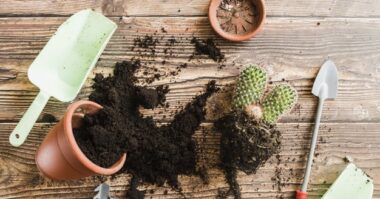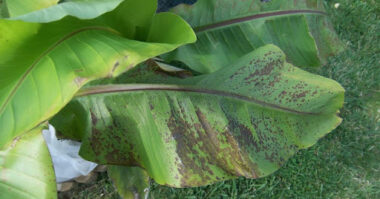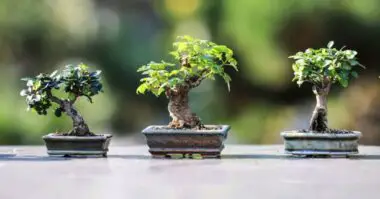There is no need to panic when the orchid starts to show signs of weakness. There are a few practical solutions for the problems often encountered when growing a phalaenopsis orchid.
Is your orchid dry? Orchids like humid environments and fear the heat. If you have placed them near a radiator or in a room that is too sunny, move them. Carefully cut the dried roots without damaging the rest of the plant.
Contents
Why does my orchid have dry roots?
Nowadays, orchids are widespread in our homes and easy to grow, but they have specific needs. Perhaps you have encountered difficulties with yours, especially after a hot and dry summer? If its petals fall off one by one and only a simple green stem remains, or if its aerial roots are all dry, your orchid has surely run out of water.
How to save a dry orchid
There are several ways to save a dried out orchid.
If it is the roots of the orchid that are dry – they quickly turn gray in Phalaenopsis orchids – it may be that your orchid is thirsty.
If this is the case, bathe the orchid in non-calcareous water for about 20 minutes and let it drain well. If the roots turn green again, it is indeed because the orchid needed to be watered.
However, if the roots start to dry out and the leaves and stem start to dry out as well, your orchid’s concern is more serious. The roots are probably rotting because of overwatering and can no longer play their role and feed the plant.
In this case, the flower must be de-potted immediately and the dry roots cut off to save it. The orchid will then have to be repotted – if it still has roots – in a clean pot with new substrate.
Be careful not to overwater it and place it in a bright environment with a temperature between 68 and 75°F.
If the orchid has no healthy roots left, cut them anyway and try to save it by applying the technique described below.
How to cut the dry aerial roots of an orchid?
It is essential to cut the dead roots of the orchid, but first it is necessary to differentiate them. They are easy to distinguish because they become brown and a pressure with the fingers could crush them because they are softer, dried out.
It will be necessary to cut at the level of the last part which is still in good condition. It is necessary to disinfect the chisel to avoid bringing disease to the plant. Concerning the roots that are still firm, even if they have yellowed, they are not to be cut.
How to take care of an orchid so that it does not dry out?
Watering orchids
Although orchids like humidity, too much water is harmful to them. Watering is done by placing the pots containing the orchids in a small basin filled with water for about 20 minutes before removing them from the basin and letting them drain to remove the excess water. It is important that the roots do not soak in water afterwards.
Watering the leaves and flowers is avoided, but leaves and roots outside the pot can be lightly sprayed if the orchid has made air roots.
Orchids do not like water that contains a lot of calcium or chlorine. It is therefore recommended to use rainwater or to let the tap water stand for a day before watering the orchids so that the chlorine can evaporate.
The frequency of watering depends on the variety of orchid. For phalaenopsis, the substrate must always remain slightly moist. Water when it has dried by half, i.e. about once a week during the flowering period and once every two weeks the rest of the time.
Ambient humidity
Orchids need a fairly high level of humidity, which can be difficult to provide in a house, especially in winter. A humidifier can be used in rooms where orchids are present. This step of maintenance is not to be neglected if you don’t want to end up with an orchid that has dry roots again!
Orchid pots can also be placed on a saucer filled with gravel and water. Just make sure that the bottom of the pot is not in direct contact with water. You can also lightly spray the plant’s leaves in the morning.
Repotting orchids
Orchids do not need much space to be comfortable in their pot. They are repotted about every 2-3 years, when the substrate is decomposed or has difficulty draining, if the plant is too developed for its pot or if there is rot in the roots. When repotting, choose a pot that is slightly larger than the previous one.
To repot, take the orchid out of the pot and gently remove the substrate left after the roots, without damaging them. Remove any dead, dried out or damaged roots. Put the new substrate in the pot, then the orchid and cover with substrate until the beginning of the stem.
The stem can be fixed on a stake if it is too long. After repotting, watering should be suspended, spraying only the leaves, until the plant puts down new roots and starts to grow again.
